This the second short write up The first one was on Ulta Beauty last week. These short reports are not complete and they should be seen as the starting point for further work, evaluation and consideration.
AutoZone, Inc (AZO)
AZO is a retailer and distributor of automotive replacement parts and accessories. Founded in 1979, AZO is the leading auto parts retailer in the U.S., mainly known for servicing the do-it-yourself (DIY) market. As of 2024, the company operated over 6,300 stores in the U.S., 740 stores in Mexico and 100 stores in Brazil. It has 119k employees of whom approximately 60% are full-time. The company was listed in 1991 and has been a public company for nearly 34 years.
They carry product lines for cars, SUVs, vans and light trucks, including
· new and re-manufactured automotive hard parts,
· maintenance items,
· accessories and non-automotive products.
AZO’s biggest competitor is O’Reilly (ORLY) which is a very similar company and Advance Auto Parts (AAP) which is a distant third in terms of market share and profitability. Most of observations we make about AZO are likely to apply equally to ORLY.
Since it went public in 1991, AZO has given a CAGR return of 19.9%. Over 32 years, the equivalent figure for ORLY has been 21.7%.
Key Aspects of AutoZone’s business
The chart above shows that AZO has 7,236 locations and added ~190 stores every year.
Almost half of AutoZone’s domestic stores are located in its top 10 states, which are Texas, California, Florida, Ohio, Illinois, North Carolina, Michigan, Pennsylvania, New York and Georgia.
Compared with others, AZO has a more consistent national coverage, whereas ORLY is better known in the Midwest/West and AAP is better known in the Northeast.
AZO stores have 48.6mn sq. ft of space, with approximately 90%-95% of that dedicated to selling space. Annual net sales per square foot have reached $363.
Only 50% of half of the store is for selling hard parts: the parts necessary to fix or to replace car engines.
These parts typically have a slower turnover than the rest of the store, which are filled with maintenance parts and accessories. It does not make sense to keep a lot of hard parts at the expensive store locations.
AutoZone leverages its hub and mega hub stores which have 70%-85% of selling space dedicated to hard parts. Customers who want hard parts not found at a regular store, can easily get them sent over from a hub or mega hub store.
Broadly speaking, AZO and ORLY have two types of customers: DIY customers and Auto repair Shops where customers are known as DIFM (Do It for ME)
DIY
The company’s DIY customers’ trips to the store are one of three types.
when there is some kind of failure in their vehicles
to purchase maintenance products and
for other discretionary purchases.
The three self-explanatory categories are Failure, Maintenance and Discretionary.
Failure demand occurs when there is a failure in vehicles which has to fixed quickly (batteries, brake calipers, fuses, pumps, etc).
Maintenance demand is products such as fluids, plugs, wipers, etc. where demand is regular but periodic
Discretionary is discretionary purchases. The main products in each category are shown below:
For fiscal year 2023, AutoZone’s revenues were split 47% Failure, 34% Maintenance and 14% Discretionary (See below).
DIY customers also come to AutoZone because they can get help through a series of free services the company offers including:
free diagnostic tests (check engine, anti-lock braking light readings),
the ability to borrow specialty tools,
testing of batteries and other components, and
the collection of used engine oil.
Customers also have access to AutoZone’s Z-net, which they can use to look up the required parts for their jobs.
DIY customers are typically in their 30s and 40s and have a car older than 11-12 years old. They are people who have sufficient knowledge to fix most car issues.
AZO leads the DIY market with ~18% market share, followed by ORLY ~12% and AAP ~7%. The DIY market is quite concentrated. The top 4 players account for about 55% of the market.
DIFM
Auto repair shops service DIFM customers. They source the required parts at AZO, and other auto parts retailers based on availability, convenience and, lastly, price. They typically service vehicles past the warranty (usually 6 years or older). They charge customers based on the number of hours of labour required to complete the job plus the cost of parts.
Auto repair shops are known as Commercial Customers. For this segment, time is money. Parts availability is key because the quicker jobs get completed, the space in the shop can be used for the next customer. Dealers like AZO call the efforts to sell to these clients as “Commercial Sales”
In the Commercial Sales programme, AZO state they provide “commercial credit and prompt delivery of parts and other products to local, regional and national repair garages, dealers, service stations, fleet owners and other accounts.”
AZO aims to deliver to Commercial customers parts that are available in store in just 20-30 minutes and parts at a hub in under 2 hours. Auto repair shops pass on the cost of parts (or mark them up) to their customers, so price is not as big a factor as time.
AZO only got serious about the commercial business in 2008 and has significantly grown its capability in this area in the past 15 years.
The Commercial business is a customer relationship sales channel. Unlike DIY customers, Commercial customers usually require direct sales relationships at AZO. AZO has requested store managers to become more involved with their Commercial Customers, making sales calls and learning about their needs. Technicians at auto repair shops typically have a list of stores to call for parts availability and relationships help to getting towards the top of the list.
According to one analyst, this strategy has been a success “Commercial revenues were ~$750mn in 2008 and increased to $4.6bn by 2023, a CAGR of +13%. This is more than double the growth rate of the rest of the business at +5.5%.”
AutoZone only commands ~2.5% of the commercial market, with O’Reilly ~5% and Advance Auto Parts ~5%. This means, unlike in the DIY space, there is plenty of market share to go for in the Commercial space.
In addition, AZO also sells ALLDATA software which is an automotive diagnostic, repair, collision and shop management software. It accounts for less than 2% of Revenue.
Drivers of the Total Sales
Total sales Growth comes from three sources
· new store builds,
· price increases and
· market share gains in both DIY and DIFM.
New Store Builds
AZO has added about 190 stores per Financial Year in the last decade (3%-4% per annum). There was a slowdown in the Covid19 pandemic. However, even then, in the 12 months to August 2020, they added 138 stores.
Price Increases
Price increases happen usually to pass on any cost inflation which can lead to customer resistance and volume declines. This has been a difficult issue in the last three years as Parts’ prices have risen sharply. Volumes have also been on a declining trend as parts are getting better and lasting longer. However, AZO has been able to more than offset this by higher prices.
AZO likes to give is spark plugs as an example of this. In the past, spark plugs were made of copper and lasted for 30k miles. Now they are made of iridium and last 100k miles or 3.3x longer. But on the positive side, the copper plugs used to cost $0.59 but now iridium plugs are over $10, or an increase of almost 17x. A good example example of prices rises offsetting declines in sales volumes.
Market Share Gains
The DIY market share of the top three, AZO, ORLY and AAP are 18%, 15% and 8% respectively. In the last thirty years, these players have gained share at the expense of mom and pop stores and regional stores, especially in the DIY market. Both AZO and ORLY have been adding stores and expanding their geographical coverage methodically each year.
The chart below shows the same type of numbers for ORLY. ORLY has 1000 fewer stores than AZO but otherwise, the numbers look similar.
Growth in the Commercial business has increased the amount of revenue generated at each store. Typically, this would increase the efficiency per store (assuming linear distribution costs) and result in higher company margins, but there is an offset to that. The commercial business commands lower gross and operating margins.
However, the numbers look better from a profitability and returns on capital standpoint since there are few necessary incremental investments due to the increase in Commercial Business.
Summary Financial Numbers
In the last ten years, total revenues have doubled to an annual run rate of about $18bn. (~6.8% CAGR). Sales growth spiked in the aftermath of the Covid -19 pandemic but have normalised again.
Over the same period Operating Profits have grown by CAGR of 7.6% and 9.71% respectively.
Margins have been relatively stable over the last ten years.
Cash from Operations and Free Cash Flow have also grown at similar rates. A CAGR of 8.7% and 8% respectively. Given this consistence we can think of AZO as the 7%-8% growth company. This rate of revenue growth would not normally be interesting to most equity investors both AZO and ORLY are of interest due to their Capital Allocation Policy.
Capital Allocation
How does AZO allocate its large and growing Free Cash Flow?
A cumulative $24bn has been spent buying back shares over the last decade, accounting for 84% of operating cash flow. The company does not pay a dividend.
Capex includes some purchases of property, some of which is also leased. The cash from the free cash flow plus issued debt has been used to buy back shares. AZO has been an aggressive purchaser of its own shares. In the last ten years, the total number of shares has almost halved to 18mn (a decline of 6.3% CAGR)
Balance Sheet
Is the increase in debt a source of worry?
Long-term debt had grown in recent years but only in line with the total balance sheet as shown above.
Debt interest coverage (shown in the chart above) has fallen but remains comfortable. It does need to be watched. If AZO finds some market or lender resistance to new debt, it many not be able to borrow as much or only do so at higher interest costs. In this scenario, it may not be able to buy back shares at its former pace.
Net profit growth of about 9% CAGR and decline in shares outstanding of 7% CAGR has resulted in an EPS increase of ~17% CAGR. This has been the pattern since 1997 as shown below. AZO has been suggest a large buyer of its shares that it has been called “The Cannibal.”
The huge scale of buybacks of shares and their cancellation has made the historic value of equity negative so Return on Equity (ROE) cannot be meaningfully calculated. However, ROTC and ROIC are at 33% and 30% indicating the company has been very profitable. Since 1991, the company has given shareholders a CAGR total return of 19% per annum.
Analysing The Business
As the leading auto parts retailer, AutoZone benefits from scale advantages and intangible assets. Scale allows the company to
· operate with lower distribution costs,
· gain bargaining power over its suppliers and
· move up market for commercial clients.
AZO has invested heavily in its distribution centres and mega hub locations in recent years. AZO had just 5 mega hub locations in 2015 and now has 100.
“As we've announced, we'll likely have over 200 mega hubs at full build-out. Last year, we opened 20, we're likely going to open less than that this year. And we've got work to do. These are big boxes and difficult to find places.”
Autozone Store in Texas
Distribution advantages help the company get slower turning products (mostly hard parts) that are held at mega hub and hub locations to its customers in a timely fashion.
This is especially important for the Commercial Business, where timely availability of auto parts matters much more than price.
AutoZone has also been able to increase bargaining power and lengthen payment terms over its suppliers as the company has grown. Payables have expanded at a faster rate than inventory, especially over the past 3 years.
The large Inventories and Accounts Payables have a similar trend in the last 10 years. This indicates that suppliers are largely financing inventory for AZO.
Greater business scale has also helped the company better gain national accounts. AZO now has over 5,600 commercial programmes. 92% of its domestic store base now has commercial programmes. Majority of the stores in Mexico and Brazil have Commercial Programmes. The buyers who are national accounts usually require coverage across regions and indeed the whole country .
“Our Domestic Commercial business remains our top priority for growth. Domestic Commercial is just over 25% of AutoZone’s total revenues, and it grew an impressive 8.7% in FY23, but slower than the exceptional 26.5% growth we experienced in fiscal 2022 (“FY22”).”
“Domestic Commercial sales reaching an all-time record of $4.6bn in FY23 and having less than 5% share of this significant and growing industry, we are excited about our future growth prospects. For the year, we averaged $16,000 in average weekly sales per Commercial program in the U.S., up from $15,500 last fiscal year.”
Private label is a unique situation for AutoZone because it contributes to more than 50% of total revenues. AZO has its own set of private labels which are applied to hard parts and other accessories.
Duralast is the most well-known brand, accounting for more than 50% of hard parts sales. Azo also has other brands such as ProElite, Shop Pro, SureBilt, TotalPro and others.
Duralast has gained a bit of brand equity over the years and the company has been able to offer brand extensions for brake pads, chassis, shocks and struts.
Recently, Duralast has helped the company in its efforts to expand the commercial business, so it’s been a source of strength in both the DIY and DIFM businesses.
On the intangible assets side, having a national presence and therefore a national brand helps the company in two ways.
First, new store openings will be more efficient because the customers in the catchment area will already know the brand or be existing customers. The time for the store to reach to maturity should be lower.
Second, overall marketing costs come down because national advertising is much more efficient vs. local advertising.
Auto parts retailers also benefit from industry tailwinds.
First, auto parts tend to be counter cyclical. During a weak economy, consumers tend to buy fewer new cars and instead extend the life of their existing cars. So older cars run more and are more likely to need new parts and repairs.
Second, cars last much longer than in the past, which implies that more of the useful life car is beyond the warranty. The average age of the light vehicles in the U.S. reached 12.2 years in 2022, up from 11.3 years in 2013.
Warranties typically last for up to six years. The cohort of 6-10 year old vehicles on the road tends to drive the direction of growth rates for auto parts retailers. The number of vehicles in this category is growing.
E-commerce threat ?
When considering a retailer, we must consider the threat of online retailers, especially Amazon.
Consumers can easily switch to a cheaper online option for categories like accessories and even maintenance. However, for parts failures, immediate availability is usually what’s going to drive purchasing decisions. Furthermore, AZO, ORLY have in-store services and knowledge that is an advantage for winning customers.
Amazon has not yet been a major player. This is in part due to the non-discretionary nature of car repairs. While planned maintenance, like oil changes or brake replacements, can be ordered online, other repairs require failure parts immediately and Amazon struggles to match the 30-minute windows & in-store help that AZO or ORLY can offer. Nevertheless, Amazon many be a threat in maintenance, a category which accounts for 34% of AZO’s revenues.
AZO has been increasing its own eCommerce capabilities in recent years by leveraging its growing distribution network. The company now offers eCommerce features like next day delivery and buy online and pick up in store. The eCommerce business remains a small percentage of revenues
Returns on incremental capital?
Over the past 14 years, AutoZone has spent 96% its capital on capex and 4% on acquisitions.
Capex spend is related to new stores, relocation/renovations of existing stores, technology investments and building out the distribution network.
On the technology front, the company has recently invested heavily in the customer sales experience. AutoZone improved the front-end eCommerce experience, lowered delivery times through efficient distribution controls and rolled out handheld devices to employees.
New stores are opened if AutoZone can find locations that meet the company’s internal hurdle rate.
Factors that go into the financial projections for a new store include
· Population and demographics,
· vehicle profiles (7+ years),
· the potential for commercial business,
· the strength of the competition in the region and
· the cost of opening in the chosen location.
In recent years, AutoZone has been experimenting with building more mega hubs and increasing the number of mega hubs in a region. These can hold more of the less fast-moving inventory and supply it to the stores.
This has resulted in much less cannibalization of existing stores than originally thought and has even helped with eCommerce efforts and the commercial business in those regions.
The company has increased its target for mega hubs over time. In 2013, they thought that 25-40 mega hubs would be enough domestically. In 2019, AutoZone increased this target range to 70-90. And in 2022, the company increased the target to 200 mega hub and over 300 hub stores.
The company did mention on its Q4 2023 earnings call that new store ROIC’s are close to 50%,
The company believes that the runway remains long for the opening of new stores.
Analysts have estimated that AZO has generated returns on incremental capital between 40%-60% over the past 5 years. These high numbers suggest the long-standing capital allocation decision not to pay dividends but to re-invest in the business and buy-back shares has been the correct one.
Reinvestment potential?
As of 2020, the U.S. light vehicle aftermarket, the Total Addressable Market (TAM) was estimated to be $290bn +, with ~$190B for DIFM and ~$70B for DIY.
The DIFM market can be further broken down to $105bn in mechanical and collision parts and $85bn in labour.
With $12.8bn in DIY revenues and $4.6bn in commercial revenues, AZO has ~18% share of the DIY market and just ~2.5% of the DIFM or commercial market in 2023.
We can also look at the TAM in terms of store count is also useful. There are over 44k+ auto parts retail locations in the U.S.
With 7.3k domestic stores, AZO has almost 17% market share in terms of stores. The top 4 auto parts retailers have 24.5k domestic stores, which more than 50% of the market share. Over the past two decades, a lot of the store growth from the top 4 players have come at the expense of mom and pop locations or smaller regional chains
AZO believes that current the high ROIC and profitability per store is sustainable due to the ramp up in the Commercial Business. This has allowed for new growth areas even in the company’s more mature U.S. markets
Overseas expansion
Internationally, the company still sees ample opportunities in Mexico and Brazil as well as in other new markets.
AZO has been in business in Mexico for over 20 years and the playbook is very similar to that of the U.S. The car population is a bit older in Mexico, many of which are new US and ex-U.S. used cars.
Brazil has been on a slower ramp, and AZO is still losing money in the region. That is due to the low store count vs. the infrastructure required, but AZO aims to figure it out since the company has only been in the region for less than a decade. The car population in Brazil is comprised of smaller cars with much smaller engines. AZO estimates that Brazil can account for over 1k stores at maturity.
International same store sales are growing much faster than domestic. International expansion will be a strongly positive source of future sales growth.
International expansion will contribute more as the company builds out its network of stores in Mexico and Brazil.
It remains to be seen if the business in these countries has similar economics to that of the U.S. We should be able to see the result of all the investments over the next few years. Further expansion into the rest of South America could be an option for the company in the future. Canada also remains an option as its car population is a similar size to that of Mexico.
“Our international business is now over 10% of our company’s total revenues, and we are planning to accelerate our investments in these growth markets for years to come.”
AZO vs. O’Reilly
O’Reilly (ORLY) has taken the lead in heavily investing in distribution capabilities, including the hub and mega hub model. O’Reilly calls them super hubs. These are important for the Commercial Market growth. This gives AZO an expansion road map to follow
EV adoption?
EV adoption is a concern for auto parts retail as EVs tend to have fewer mechanical parts and require less maintenance than internal combustion engine (ICE) vehicles. This will likely be a headwind that the industry will have to deal with eventually, but there are a few offsetting factors to note for now.
First, the structural 6+ year buffer due to the warranty length on new cars.
Second, EV share of new vehicles sold per year is low. Estimates very but the EV share among new vehicle sales was likely somewhere in the range 7%-12% in 2024. It will take a while for this to impact the 6–10 year-old car population. The latter will remain mainly ICE for many years.
Third, AZO and ORLY have already been experiencing annual declines in units sold for quite some time due to better quality of parts. As discussed above, the effective offset to this in the past has been higher prices.
Some analysts have projected that EVs are only expected to be at 12% of the total car population by 2050. Electric cars have fewer moving parts but require more expensive parts and complex repairs.
AZO should have plenty of runway over the next 30 years even as more EVs are sold. However, EVs do represent a possible long-term threat.
Recent Trends
Sales have slowed in the most recent quarter to 3.5% (y/y) lower than planned. Q3 included tax refund season.
“However, February tax refund flows were lower than expected and negatively impacted the first three weeks of the quarter's domestic same store sales.”
“Secondly, the weather was unfortunately cooler and wetter than we had expected and planned, especially in the Northeast and the Midwest markets.”
Operating income is 5% higher while Net Income grew just 0.6%.
The most recent earnings numbers were lacklustre. Sales only grew 0.9% (q/q).
Earnings Call
“For the third quarter, our total company same store sales were 0.9% on a constant currency basis. As we have mentioned, international has become a more important part of our growth story in this quarter. We delivered another strong quarter, up over 9.3% on a constant currency basis.”
Though the top line was weak, there is considerable operating leverage in the business and that was demonstrated in the most recent quarterly results as well.
“Our operating profit grew 4.9% while our earnings per share grew 7.5%.”
The company has been focusing on Commercial sales recently but even these saw lacklustre growth in the most recent quarter.
“Our commercial business grew 3.3% against last year's Q3 growth of 6.3%. Domestic commercial sales represented 31% of our domestic auto part sales for Q3.”
“Commercial sales growth continues to be driven by the key initiatives we've been working on overtime”
We noted above that international business has been growing much faster than domestic. However international is currently too small to have a significant impact on overall results.
“..with 872 stores opened internationally or 12% of our store base, this business had yet again impressive performance last quarter and should continue to grow at a robust pace for the remainder of fiscal year 2024 and beyond.
“We are leveraging many of the learnings we have in the US to refine our offerings in our international markets.”
Summary
AZO has been a remarkable company and it has given a total return of 19.8% CAGR over 33 years. This compares with about 11% CAGR for the S&P 500 Index.
The simple summary numbers are as follows.
The company has grown revenues at a rate of CAGR of 7%-8%.
This has translated to a CAGR net profit growth of 10% -13%.
As the company has been reducing its share count by about 6% -7% per annum, the CAGR EPS growth has been about 16% to 19%.
The company has used its cash flow and built up its store base over the last 34 years. The cash flow has been used to reinvest cash generated in the business to invest in new capacity and aggressively buy back shares
The top four companies have 55% of the DIY market and getting market share will be more difficult than it has been in the last 40 years. AZO understandably is focusing more on the commercial segment (where its market share is ~3%) and on the fast growing international sector.
Valuation
The company is currently trading on a forward P/E multiple and a forward P/FCF multiple of 19.5X and 21X respectively.
This implies an earnings yield of 5.2% and an FCF yield of 5.0%.
On the face of it, this looks reasonable, but it will need to be confirmed with more detailed work such as a Discounted Cash Flow (DCF) valuation.
Conclusions
The company seems a good investment which should give a return of about 13% to 20% per annum, if it is bought at a reasonable correct valuation.
The following issues need to be considered before a decision on an investment can be made
We need to consider whether the current slowdown in sales is temporary and whether the company can go back to growing sales at about 7% -9% going forward.
We need to understand their strategy for the Commercial Market to assess the probability of success.
We need to understand their strategy for the International Market to assess the probability of their success.
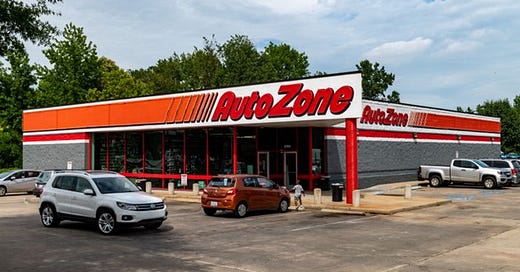





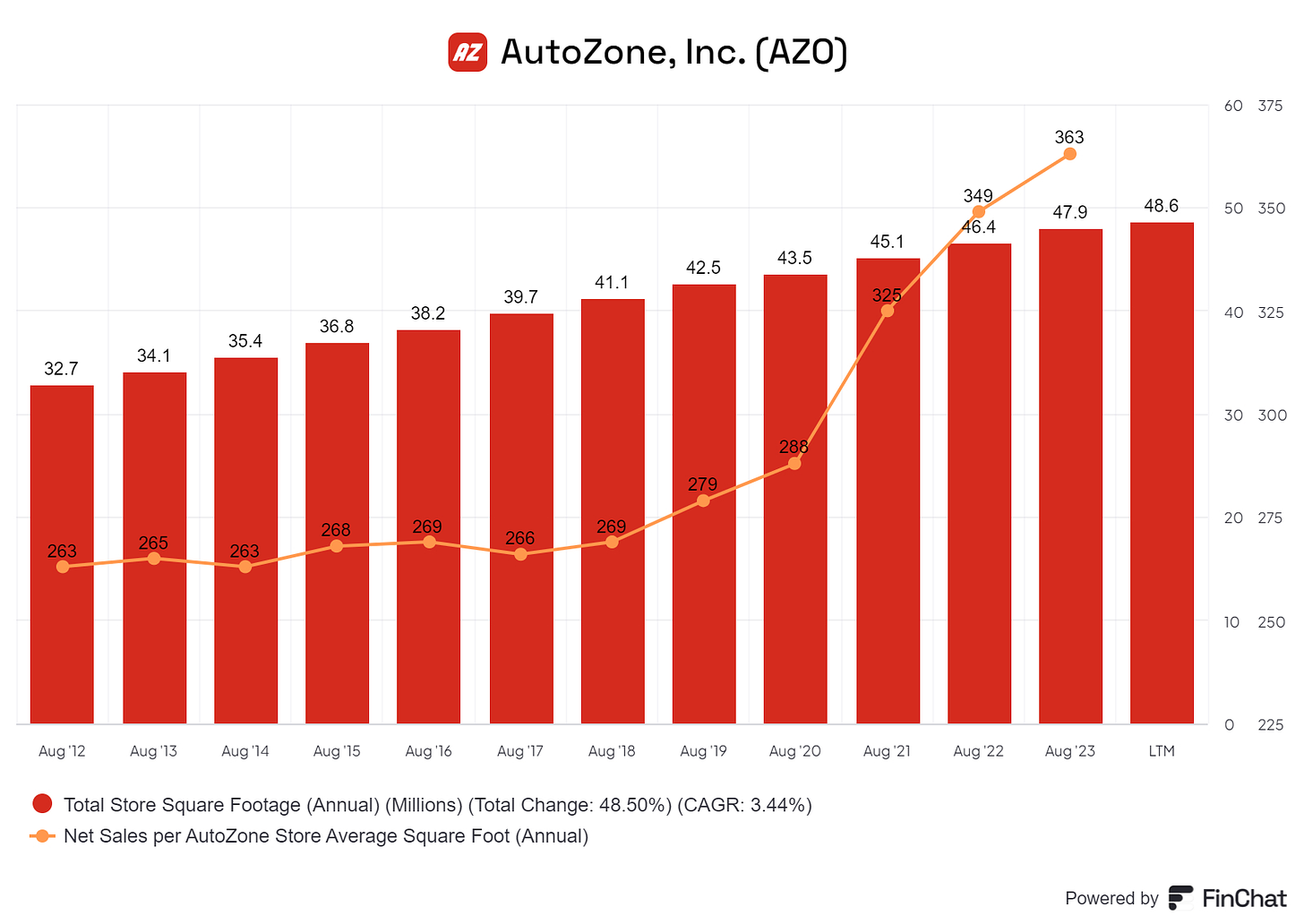
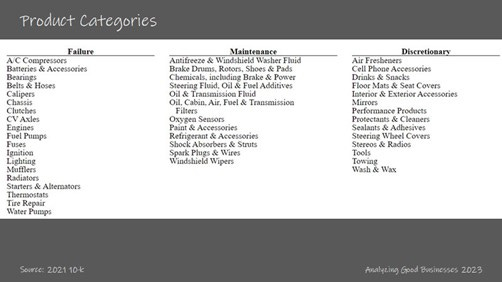

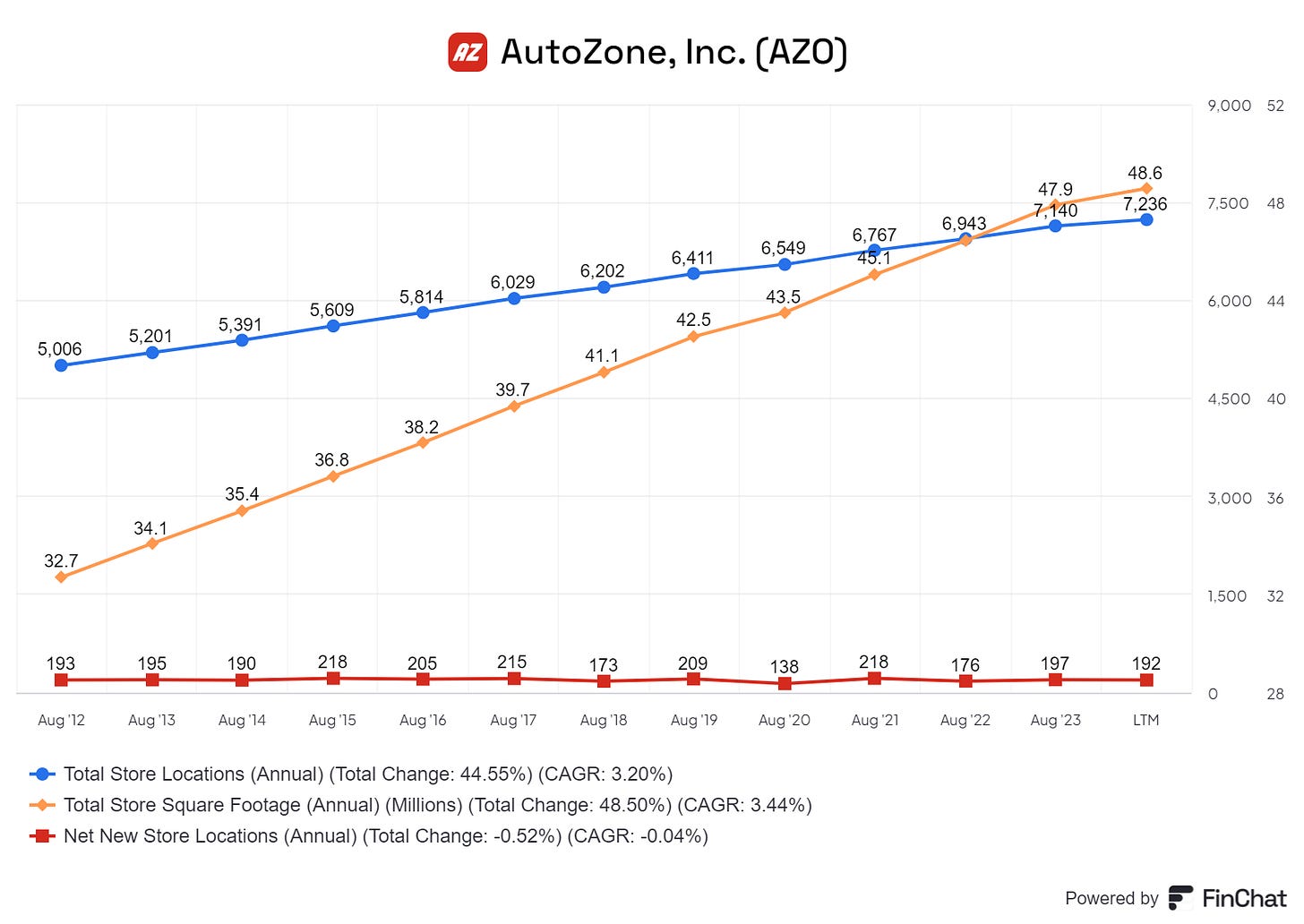





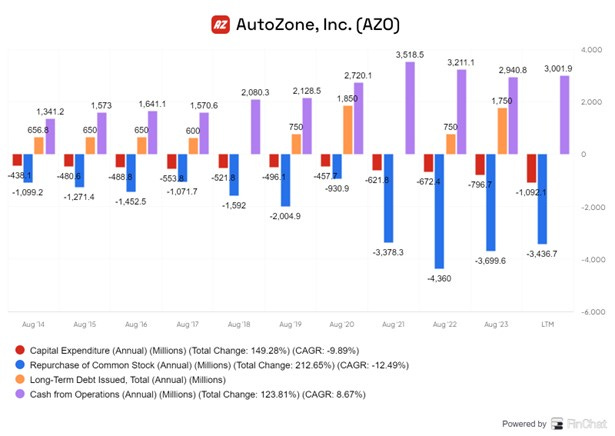

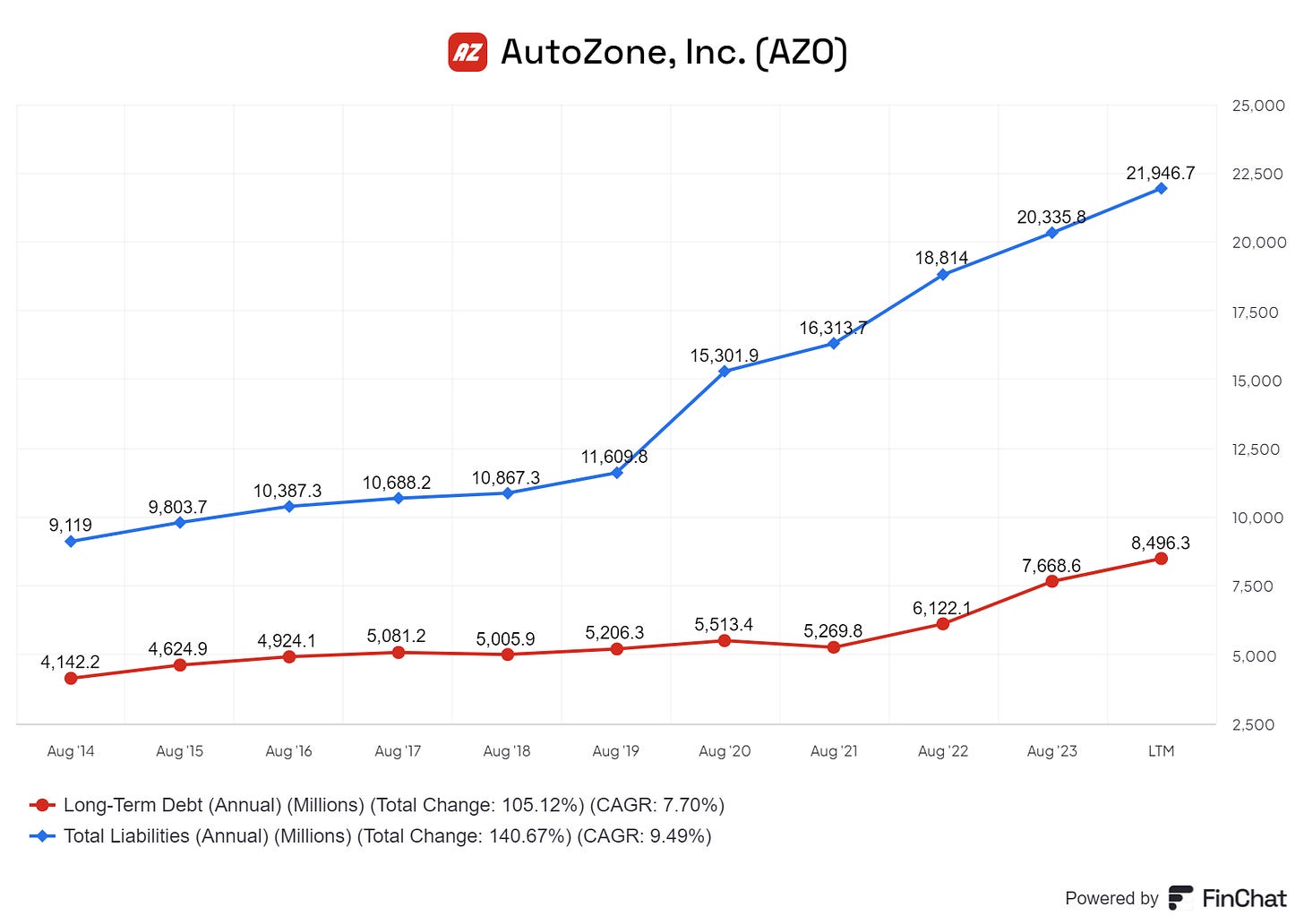


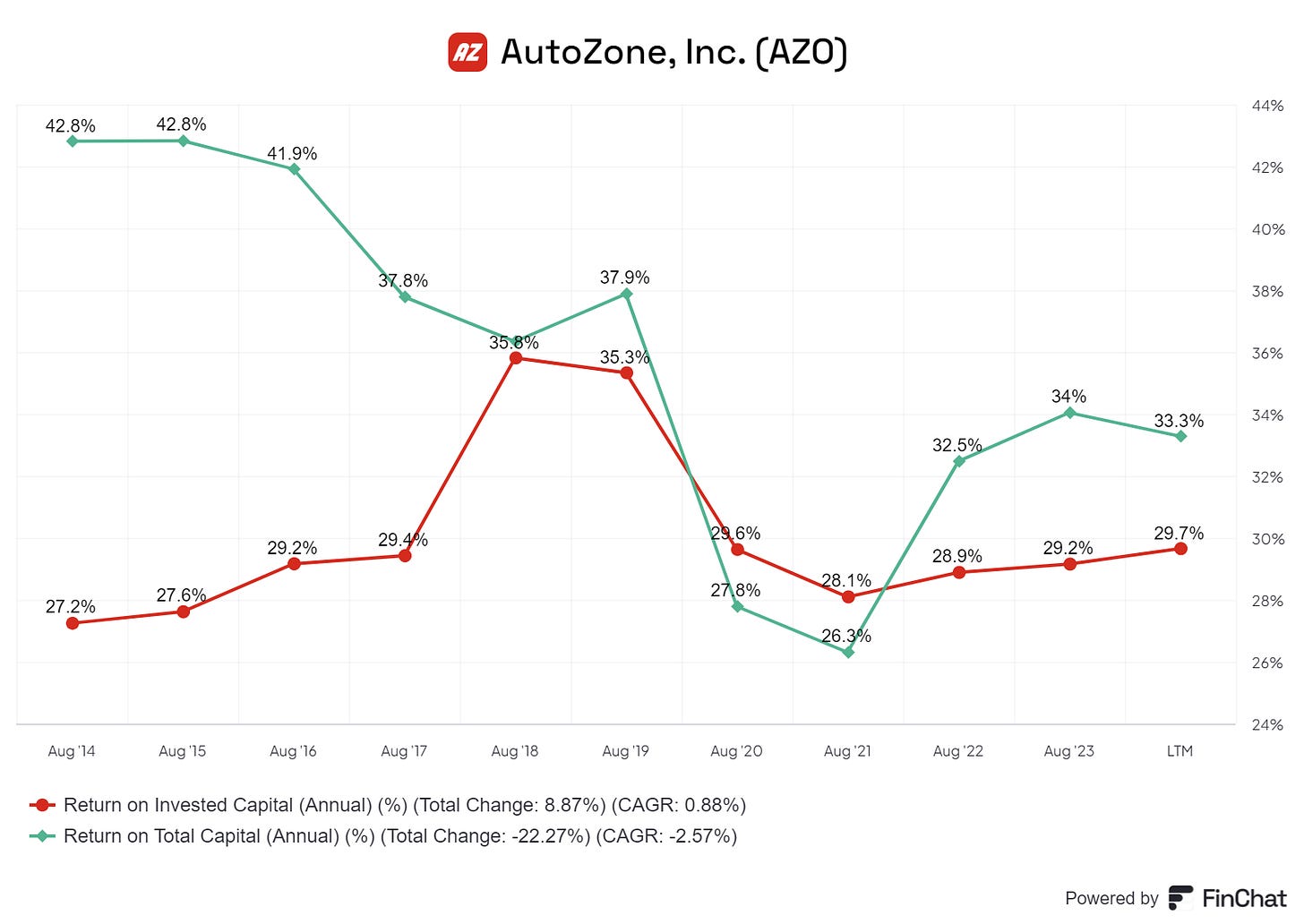

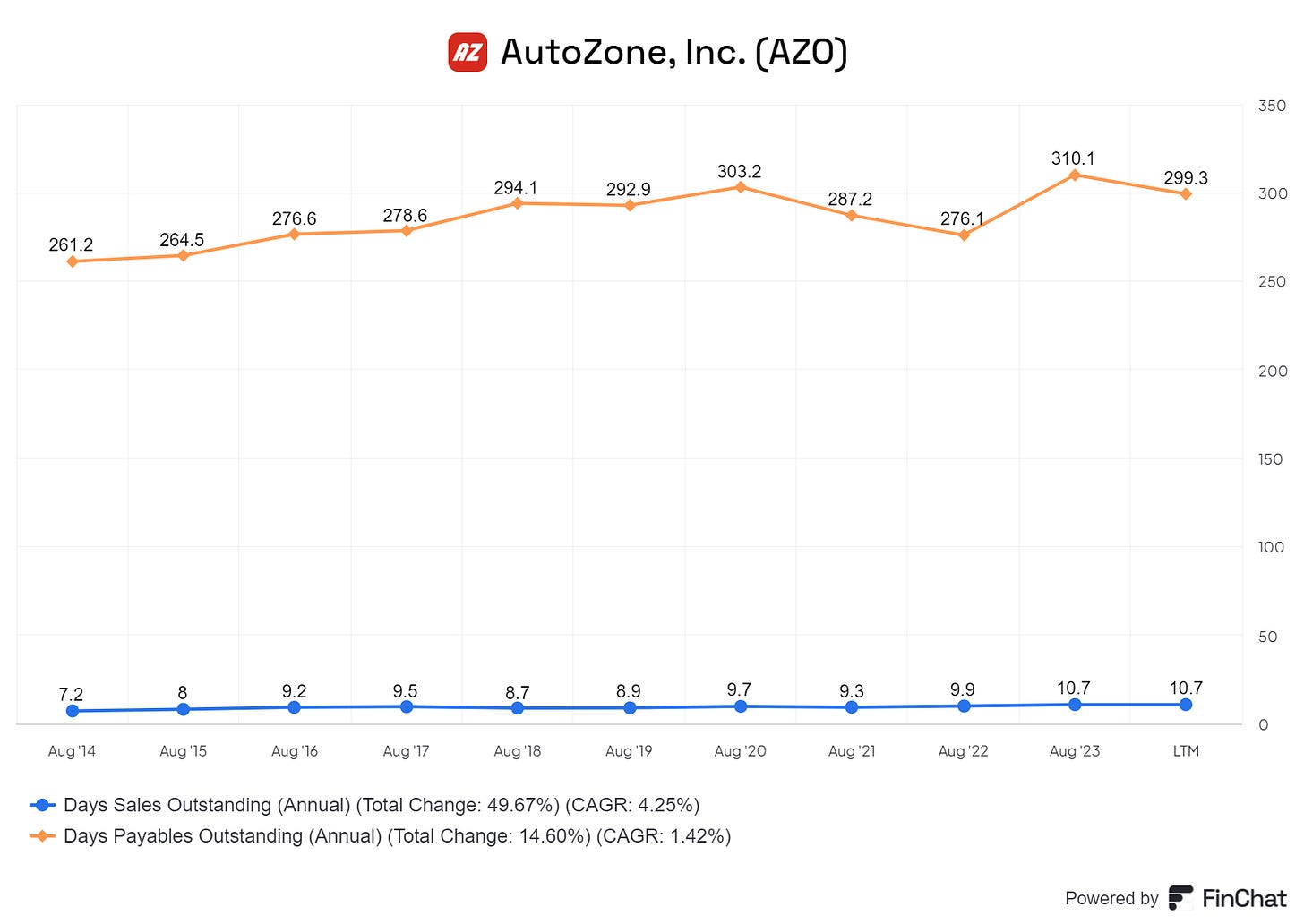



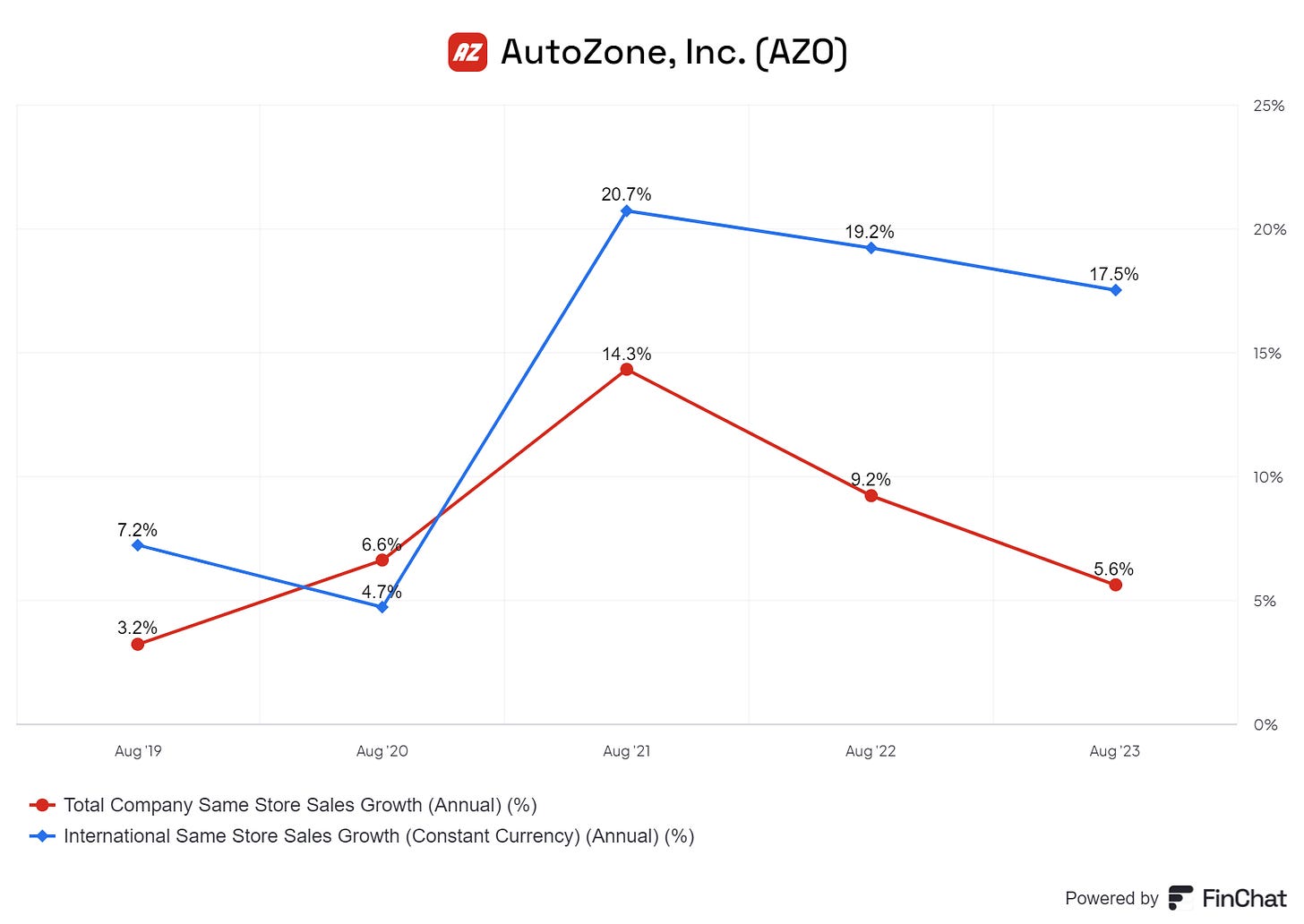



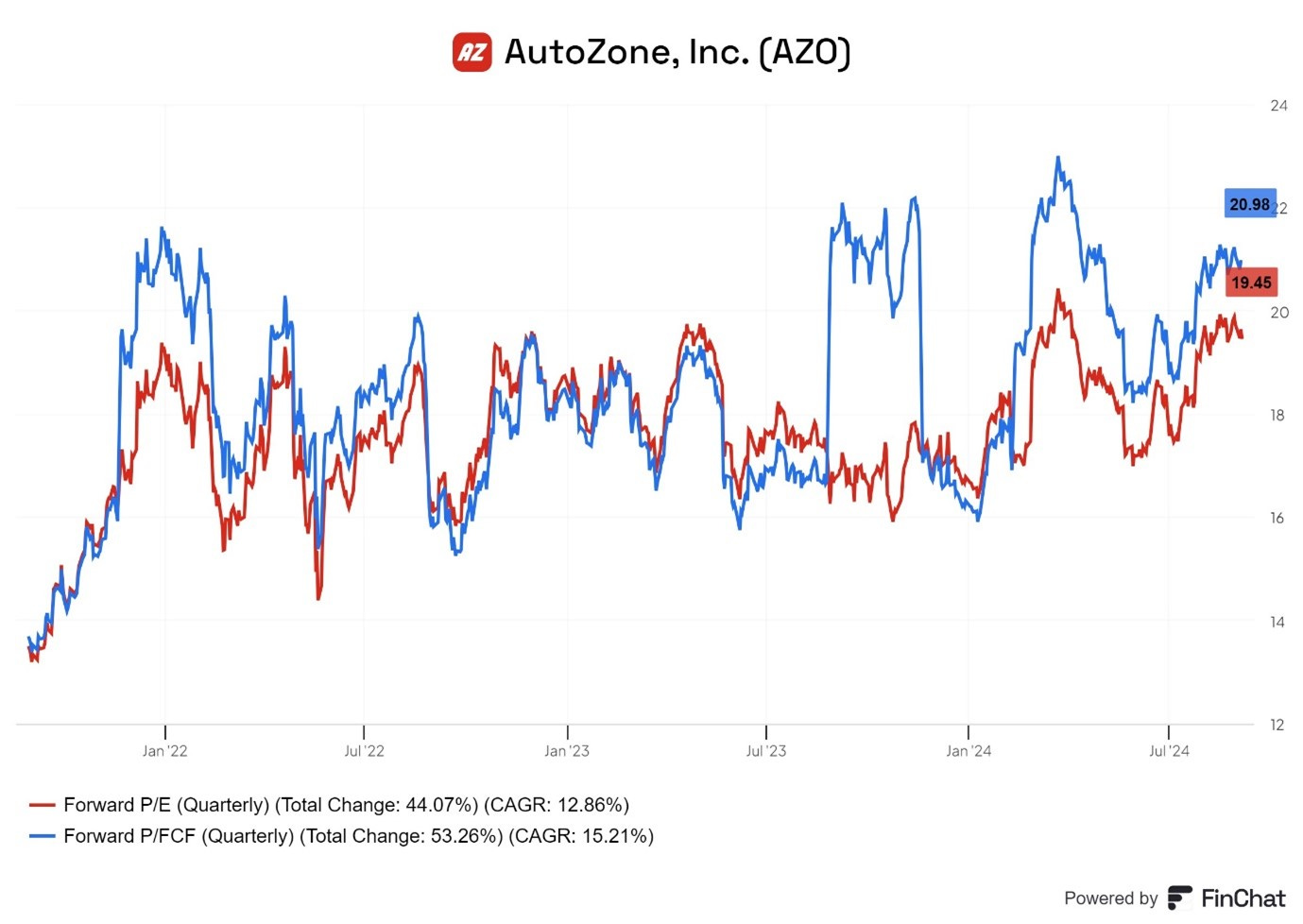
Is there anyone you recommend when it comes to how to analyze insurance companies and real estate companies for investment using the value investing method :)?
The company looks amazing and great article:)!,
Unfortunately, it costs $3,103 per share, even if it was traded at a discount, I can't afford it and neither can anyone lol...